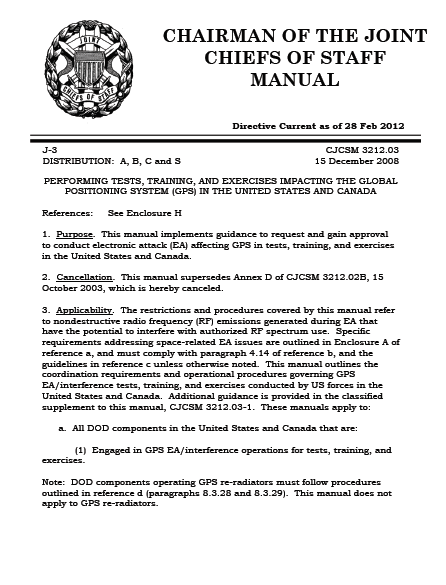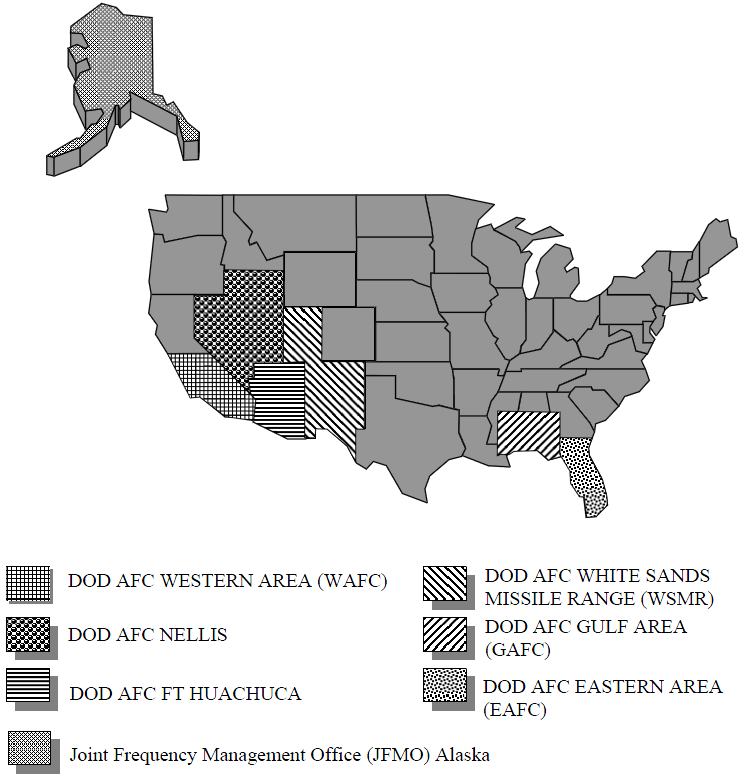The following manual is part of a series of “limited release” DoD doctrine publications that are not released to the public.
CHAIRMAN OF THE JOINT CHIEFS OF STAFF MANUAL 3212.03: PERFORMING TESTS, TRAINING, AND EXERCISES IMPACTING THE GLOBAL POSITIONING SYSTEM (GPS) IN THE UNITED STATES AND CANADA
- 48 pages
- December 15, 2008
1. This manual sets forth Service responsibilities regarding RF clearance coordination for the performance of GPS EA/interference in the United States and Canada during tests, training, and exercises.
2. The Services must ensure that forces can operate in an intense electronic warfare (EW) environment; therefore, DOD tests, training, and exercises involving GPS EA/interference are vital to the effective employment of combat forces.
3. Reference e, as amended, is designed to serve national security and defense as well as other national policies and goals involving spectrum-dependent equipment. Additionally, reference f states that “The Secretary of Transportation shall give full consideration to the requirements of national defense.” DOD EA/interference operations are a part of national defense and once approved under the auspices of this manual should not be terminated except as specified below. Organizations engaging in GPS EA/interference operations shall comply with Enclosure D for termination of operations when “CEASE BUZZER” procedures are requested. The following are valid reasons for termination:
a. Safety of life.
b. Safety of flight.
c. Harmful interference.
d. Operational Security (OPSEC).4. The conduct of peacetime GPS EA/interference, in areas defined in this manual as Canada and United States and Possessions (US&P), is governed by this manual under the authority of references e and f. International Civil Aviation Organization (ICAO) and the International Telecommunication Union (ITU) regulations (reference g) provide further considerations for conducting EA within international airspace, but do not govern DOD component EA operations. However, EA may be highly regulated and confined to the vicinity of designated military areas as a means of accommodating ICAO safety-of-life concerns and ITU frequency regulations.
5. The environmental consequences of EA and its employment must be analyzed in accordance with provisions of reference h and the accompanying Council on Environmental Quality Regulations. Consult Service-specific regulations.
…


